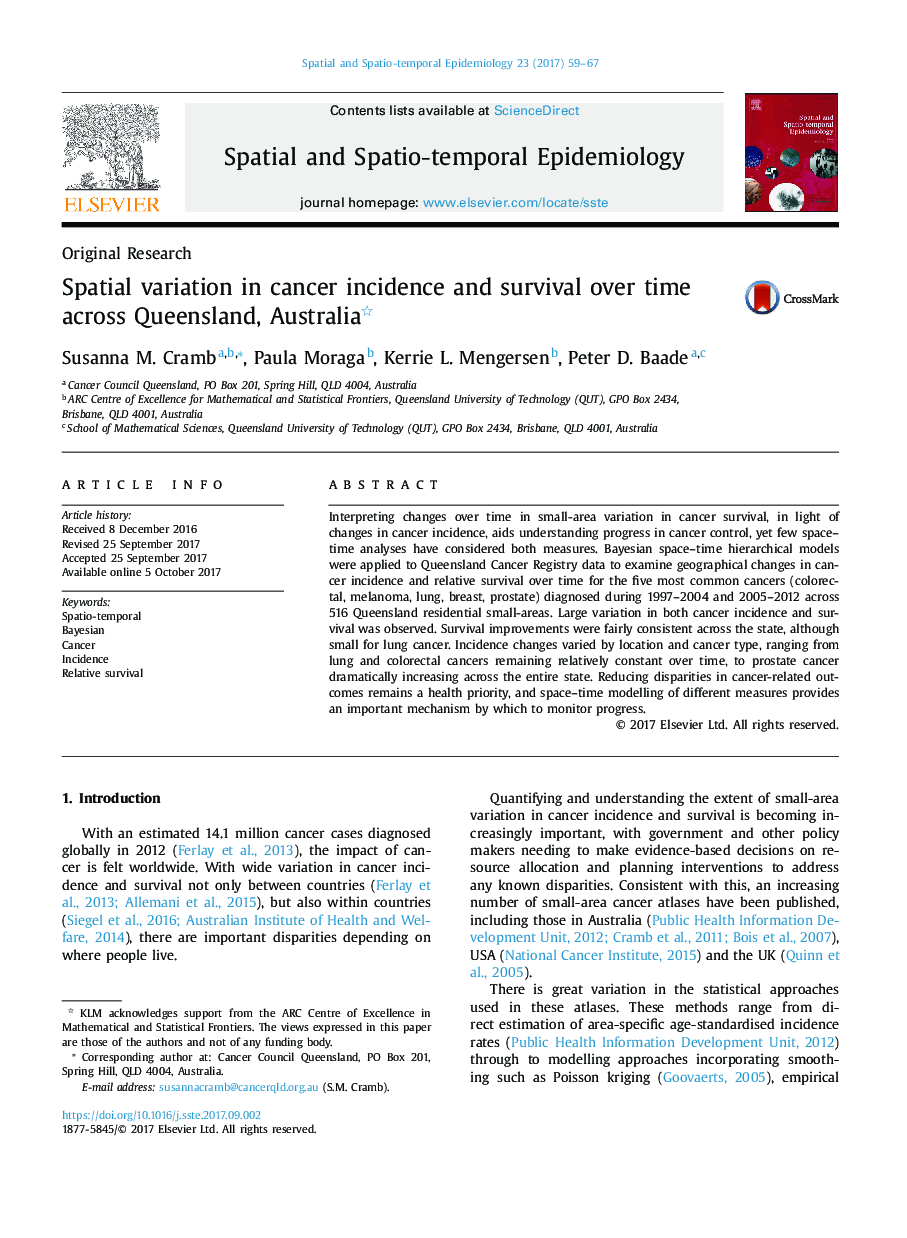| Article ID | Journal | Published Year | Pages | File Type |
|---|---|---|---|---|
| 5118919 | Spatial and Spatio-temporal Epidemiology | 2017 | 9 Pages |
â¢Examines changes in incidence and relative survival across 516 small areas using Bayesian space-time hierarchical models.â¢Survival improvements were widespread for all five cancer types examined, but incidence changes varied.â¢Prostate cancer is overdiagnosed, other cancers may be underdiagnosed in some areas.â¢Examining multiple measures aids understanding progress in cancer control.
Interpreting changes over time in small-area variation in cancer survival, in light of changes in cancer incidence, aids understanding progress in cancer control, yet few space-time analyses have considered both measures. Bayesian space-time hierarchical models were applied to Queensland Cancer Registry data to examine geographical changes in cancer incidence and relative survival over time for the five most common cancers (colorectal, melanoma, lung, breast, prostate) diagnosed during 1997-2004 and 2005-2012 across 516 Queensland residential small-areas. Large variation in both cancer incidence and survival was observed. Survival improvements were fairly consistent across the state, although small for lung cancer. Incidence changes varied by location and cancer type, ranging from lung and colorectal cancers remaining relatively constant over time, to prostate cancer dramatically increasing across the entire state. Reducing disparities in cancer-related outcomes remains a health priority, and space-time modelling of different measures provides an important mechanism by which to monitor progress.
